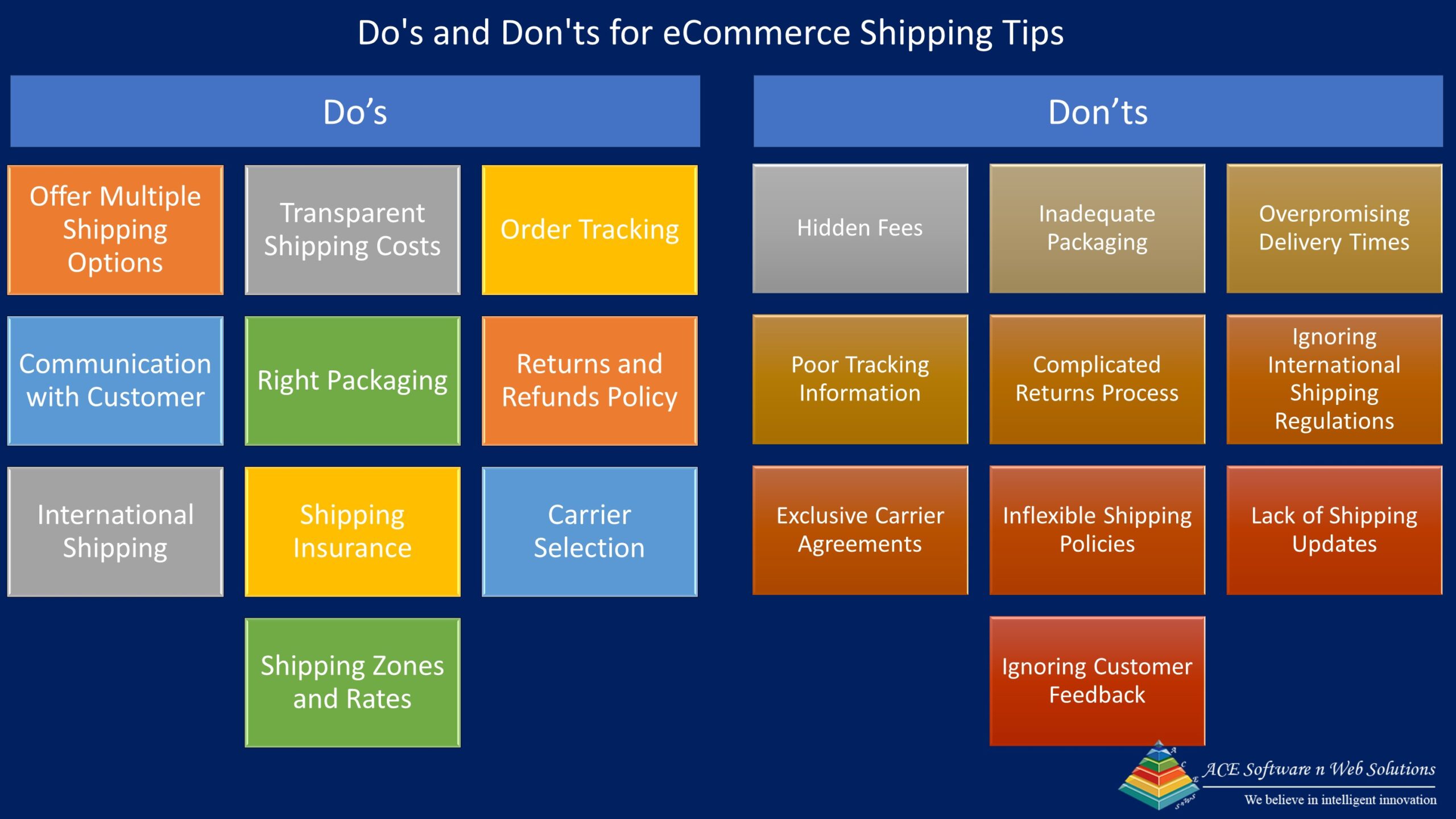
Do’s and Don’ts for eCommerce Shipping
Shipping is a crucial aspect of eCommerce, and getting it right is essential for customer satisfaction and the success of your online store. Here’s a list of do’s and don’ts for eCommerce shipping:
DO’s for eCommerce Shipping:
- Offer Multiple Shipping Options:
- Do provide various shipping options, including standard, express, and free shipping, to cater to different customer needs.
- Transparent Shipping Costs:
- Do clearly display shipping costs and delivery times at the checkout to avoid surprise charges for customers.
- Order Tracking:
- Do offer order tracking so customers can monitor the progress of their shipments in real-time.
- Communication:
- Do keep customers informed about the status of their orders through email or SMS notifications, including shipping updates and delivery confirmation.
- Packaging:
- Do use appropriate and secure packaging to protect products during transit and ensure they arrive in good condition.
- Returns and Refunds Policy:
- Do have a clear and customer-friendly returns and refunds policy in place. Make the process easy for customers.
- International Shipping:
- Do consider offering international shipping options to expand your customer base.
- Shipping Insurance:
- Do offer shipping insurance as an option, especially for high-value items, to provide added protection for customers.
- Carrier Selection:
- Do choose reliable and reputable shipping carriers with a good track record for on-time deliveries.
- Shipping Zones and Rates:
- Do set up shipping zones and rates based on geographical locations to accurately calculate shipping costs.
DON’Ts for eCommerce Shipping:
- Hidden Fees:
- Don’t surprise customers with hidden or unexpected shipping fees during the checkout process.
- Inadequate Packaging:
- Don’t use inadequate or subpar packaging materials that may result in damaged products during shipping.
- Overpromising Delivery Times:
- Don’t overpromise on delivery times. Be realistic about the time it takes to ship products, and avoid setting unrealistic expectations.
- Poor Tracking Information:
- Don’t neglect providing detailed and up-to-date tracking information, as this can lead to customer frustration and uncertainty.
- Complicated Returns Process:
- Don’t make the returns process overly complex. Customers should be able to initiate returns easily and with clear instructions.
- Ignoring International Shipping Regulations:
- Don’t overlook international shipping regulations and customs requirements, as this can lead to delays and issues for cross-border shipments.
- Exclusive Carrier Agreements:
- Don’t rely exclusively on one shipping carrier or service, as this can limit your options and lead to higher costs.
- Inflexible Shipping Policies:
- Don’t have rigid shipping policies that don’t accommodate special requests or customer needs.
- Lack of Shipping Updates:
- Don’t fail to keep customers informed of any shipping delays or issues. Communication is key.
- Ignoring Customer Feedback:
- Don’t ignore customer feedback regarding shipping experiences. Use this feedback to improve your shipping processes and policies.


